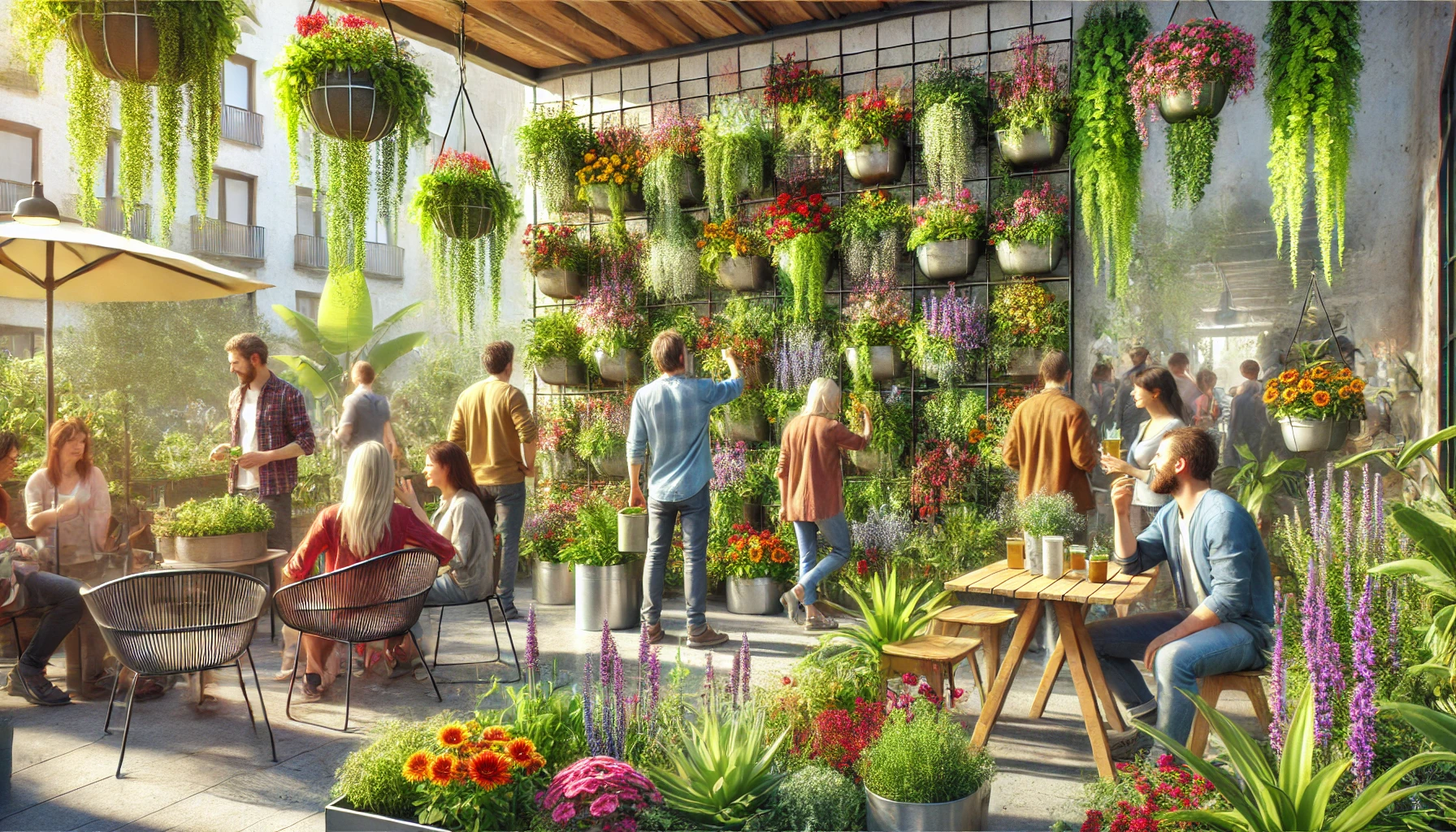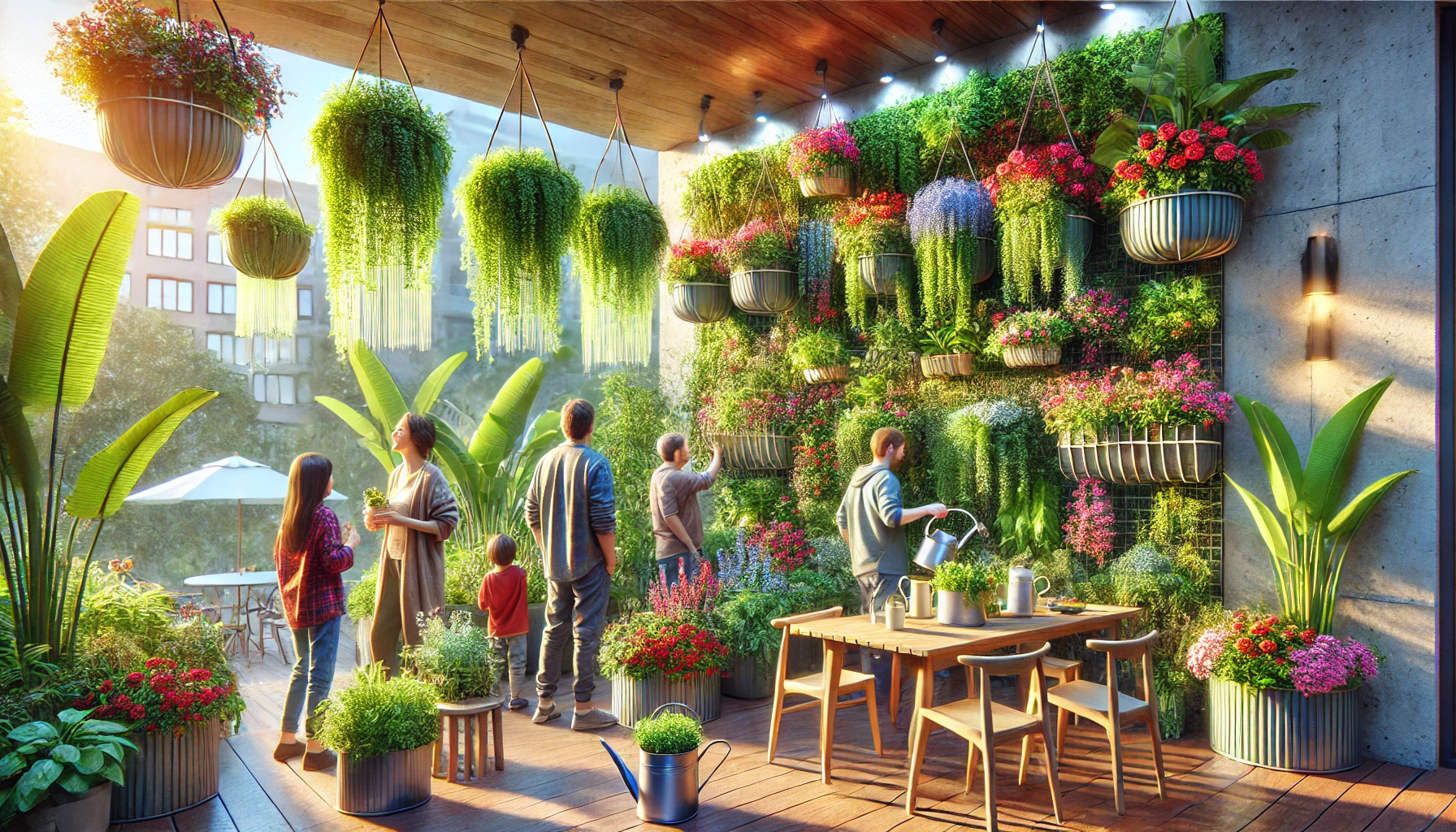Hanging Vertical Planters are making waves as a smart solution for anyone trying to amp up their greenery game without a ton of space. Think about it—whether you’re downtown in a small apartment or just love the look of cascading plants off the wall, these planters are a super versatile choice.
Space-saving is easily the top draw. If you’ve got a tiny balcony or apartment, these planters let you maximize vertical spaces like walls or small patios without cramping your style. It’s like having your garden and keeping your living space too.
Beyond just fitting into tight spaces, these planters can really elevate the aesthetics of your home. Imagine a lush vertical garden as a backdrop in your dining room or even outside on your deck. It’s like adding a piece of live art to your space, which not only beautifies but brings life to any setting.
There’s a health angle worth mentioning too. More plants mean better air quality indoors, which can boost mood and productivity. Having a wall full of greens can help filter out pollutants and give you a bit of peace and tranquility. Honestly, who wouldn’t want that easy breath of fresh air?
And don’t forget, these planters work with a variety of plants. Whether you’re into florals, herbs, succulents, or even small vegetables, they provide the right setup to mix and match according to your taste and needs. This means anyone—from the seasoned gardener to the person who’s still figuring out how not to kill a cactus—can enjoy a thriving vertical space.
If you’re on the fence about starting out with a vertical garden, remember it’s not just about green thumbs. It’s about making the most of what you’ve got and bringing a little nature into your everyday life without over-complicating things.
Understanding Hanging Planters – Terminology and Types
Ever wonder what the deal is with all these different names for hanging planters? Essentially, they’re just containers designed to hang off walls, railings, or ceilings. You’ll hear terms like “hanging baskets” or “pot hangers,” but they all serve similar purposes. The main twist is where and how you want to display your plants.
Let’s talk types. At the basic level, you’ve got wall-mounted planters, which stick right onto your walls, perfect for sleek and modern looks. Then, there are railing planters, great for balconies or porches, often featuring brackets or hooks to keep them secure. There’s also a freestanding option—imagine a vertical frame that stands on its own, holding several planters for you to mix and match as you like.
Material is another big choice to make. You’ve got your plastic options, which are lightweight and don’t break the bank. But for something more classic, ceramic or terracotta can add a touch of class and color. Then there’s metal and wood, which bring that rustic chic vibe. Each material has its perks and quirks, depending on how quickly you want the soil to dry out or how heavy a planter you’re willing to manage.
Now, when it comes to selecting a design, consider the type of plants you’re planning to grow. Herbs and smaller veggies might need more depth, while succulents could thrive in something more shallow. You’ll want to cater your choice to the needs of your specific plants to make sure they’re living their best lives.
Equipped with this info, you’re ready to browse those planter options with confidence, tailoring your selections to fit not only your visual preferences but also the practical needs of your plant babies.
Key Considerations for Filling Tall Planters
When it comes to filling tall planters, it’s not just about dumping in a pile of soil and hoping for the best. The goal is to create a balanced, efficient setup that promotes healthy plant growth while keeping the planter manageable. Here’s how you can do just that.
One thing to keep in mind is drainage. Tall planters need a well-thought-out base to allow excess water to escape, preventing what every plant fears – soggy roots. Start with a layer of gravel, broken pottery, or even packing peanuts at the bottom. This creates space for water to trickle down instead of drowning your roots.
The next layer is your soil. But wait, don’t just shovel in any old dirt. Depending on what you’re planting, a mix could include organic compost or peat moss to boost nutrition and improve moisture retention. Tall planters might need a lighter soil mix to ensure roots can grow easily without getting compacted.
But here’s the secret trick to practical filling: use lightweight organic material mid-way to reduce the amount of soil needed while also stabilizing the structure. Things like old coir mats or even some clean, recycled materials can do the trick.
For those worried about going green, layering in some homemade compost not only recycles kitchen waste but gives your plants a nutrient kick. It’s all about getting creative while keeping sustainability in focus.
With these tactics, your tall planters offer the right environment for roots to thrive, without having to cram in all that heavy soil. So, grab a tall planter and get layering – your plants will thank you for it!
Tips to Prevent Tall Planters from Tipping Over
It’s one thing to fill up a tall planter, but keeping it upright is another story. Tall planters can be a bit topsy-turvy, especially if the wind picks up or they get nudged by accident. Here’s how to keep them standing tall and proud.
Start by considering the foundation. Make sure the base is wide enough to support the height of the planter; the wider, the better for stability. This counteracts any potential wobbles and keeps everything grounded.
Weight is your friend here. Filling the bottom with heavy materials like stones or bricks can add that needed ballast to counterbalance the top-heavy nature of taller setups. It’s like giving it a pair of lead boots.
Location matters too. Placing your planters close to walls or in corners can offer added support. Plus, this can help buffer against wind, which is often the chief tipping culprit.
Don’t shy away from using some smart hardware, like stabilizing brackets or securing your planter to a railing or wall. This can be a simple and discreet way to ward off balancing issues.
Lastly, if you’re in an area with frequent strong winds, consider using wind barriers. Screens or taller structures can deflect gusts and protect your prized plants.
By anchoring your tall planters effectively, you’ll ensure they remain a stable and attractive feature of your space. These handy tips help you enjoy the vertical plant life without the chaos of a tip-over.

Caring for Plants in Hanging Vertical Planters
Keeping plants happy in hanging vertical planters is all about understanding their unique environment. When plants are off the ground and often closer to sunlight, this presents a different set of care needs.
Watering can be a challenge since gravity doesn’t exactly work in your favor here. Aim for a consistent watering schedule, preferably in the morning, to ensure plants stay hydrated through the day without sitting in soggy soil overnight.
Potting mix plays a big role in water retention and drainage. Use a high-quality, lightweight mix for better moisture control, and consider adding vermiculite or perlite to enhance aeration. This helps plants access nutrients and reduces the chance of root rot.
Fertilizing needs might change with hanging planters too. Since they’re often smaller and have less soil, regular feeding is crucial to provide all the necessary nutrients. A slow-release fertilizer can effectively manage this without overwhelming the plants.
Pruning and monitoring for pests become even more vital. Trim off dead or excessive growth to maintain the appearance and health of your greenery. Being elevated, these planters can sometimes be more exposed to pests, so keep a close eye and address any issues promptly.
Make sure to rotate your plants occasionally if they’re indoors. This ensures all sides get equal sunlight, avoiding lopsided growth, and keeps them looking even and beautiful.
By adapting your care routine to fit the needs of hanging vertical planters, your plants can thrive and become eye-catching elements of your living space.
Bringing It All Together for a Vibrant Vertical Garden
Creating a vibrant vertical garden is more than just arranging plants; it’s about designing a space that seamlessly blends nature into your lifestyle. Starting with the right hanging vertical planters, you’ve laid the foundation for a stunning display that can transform your environment.
As you become familiar with the types of planters—whether wall-mounted, railing, or freestanding—select the ones that align with both your aesthetic preferences and practical needs. Each type offers unique benefits, allowing you to tailor your set-up specifically to your space requirements and gardening goals.
Filling these planters thoughtfully ensures their longevity and stability. By selecting the right combination of materials and soil, you’re setting the stage for healthy plant growth and robustness in your planters’ structure. This balance prevents the horror of toppling plants and promotes a thriving ecosystem right in your own home.
Plant care is central to maintaining this indoor oasis. Remember that consistent watering, suitable soil mixtures, and regular maintenance elevate your planters from mere decorations to lively, blooming spaces. By adjusting your care routine to the distinct needs of hanging containers, your plants will flourish.
Finally, don’t shy away from experimenting and creatively incorporating vertical planters into various home settings. Whether indoors or out, there’s always room for greenery, fostering not just beauty but also a greater connection to the natural world.
Armed with this guide, you’re all set to embark on your vertical gardening adventure. Embrace the challenge, relish the beauty, and enjoy the process of cultivating your personal slice of nature.


Hey, Herman, this is a fantastic guide to hanging vertical planters! Here are a few questions for you:
What are the best plant types for beginners to grow in hanging vertical planters?
How do different materials (plastic, ceramic, metal, wood) affect plant health and maintenance?
Are there any specific watering techniques that work best for vertical planters to prevent overwatering or drying out?
How can vertical planters be integrated into urban settings like offices or balconies for maximum impact?
What are some creative ways to incorporate vertical planters into home decor beyond just walls and balconies?
Would love to hear your thoughts!
Thanks so much for your kind words! I’m glad you found the guide helpful. Those are fantastic questions—here are my thoughts:
🌿 Best Plants for Beginners: Herbs like basil, mint, and parsley are great starters since they grow quickly and are easy to maintain. Pothos, ferns, and spider plants are also low-maintenance options that thrive in vertical setups.
🏺 Material Impact on Plants:
Plastic: Lightweight and retains moisture well but may not allow for much breathability.Ceramic: Looks great and keeps soil cool but can be heavy and prone to breaking.Metal: Can heat up quickly, which may stress plants in direct sunlight.Wood: Natural and breathable but may need sealing to prevent rot over time.
💧 Watering Techniques: The key is controlled drainage—self-watering planters or drip irrigation work well. Using moisture-retaining soil and watering from the top down in a staggered fashion prevents overwatering at the top and dryness at the bottom.
🏙️ Urban Integration: Hanging vertical planters near windows, balconies, or partition walls can create a refreshing green space. In offices, they can double as decorative dividers, adding both aesthetics and improved air quality.
🎨 Creative Uses: Instead of just walls and balconies, try vertical planters on freestanding frames, stair railings, or even ceiling-mounted setups. Repurposed bookshelves or room dividers with built-in planters can add a unique touch to any indoor space!
Would love to hear your thoughts—are you thinking of setting up a vertical garden yourself?
Looking forward to your response!
Herman